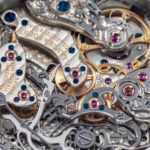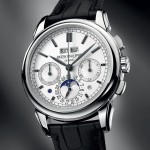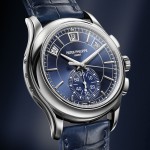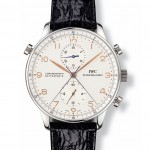Explained: The Vertical Clutch of a Chronograph
The modern and efficient approach.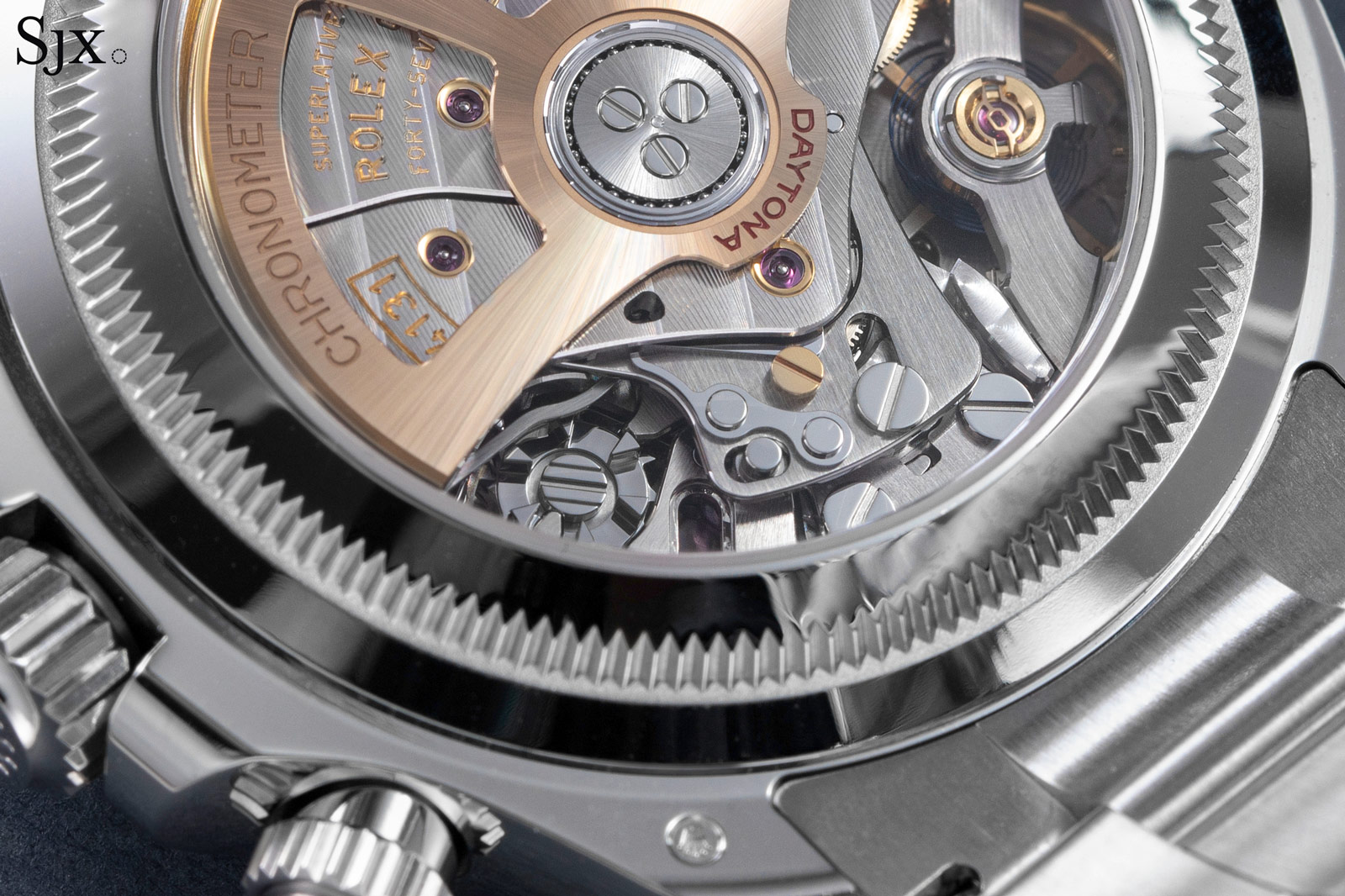
Having already explained the more traditional horizontal clutch (or lateral coupling), we now look forward to the more modern vertical clutch. This is found in some of the most famous chronographs in contemporary watchmaking, including the Rolex Daytona with the cal. 4131 (pictured above), Patek Philippe Nautilus with the CH 28-520, and Audemars Piguet Royal Oak Chronograph with the cal. 4401.
Arguably the most advanced type of chronograph coupling mechanism, the vertical clutch as it is known today was debuted in 1969 by Seiko in the 6139 chronograph. But the concept can be found in late 19th century pocket watches, and even the inexpensive Pierce Chronographe of the 1930s. Today it is practically the default choice for new chronograph constructions.
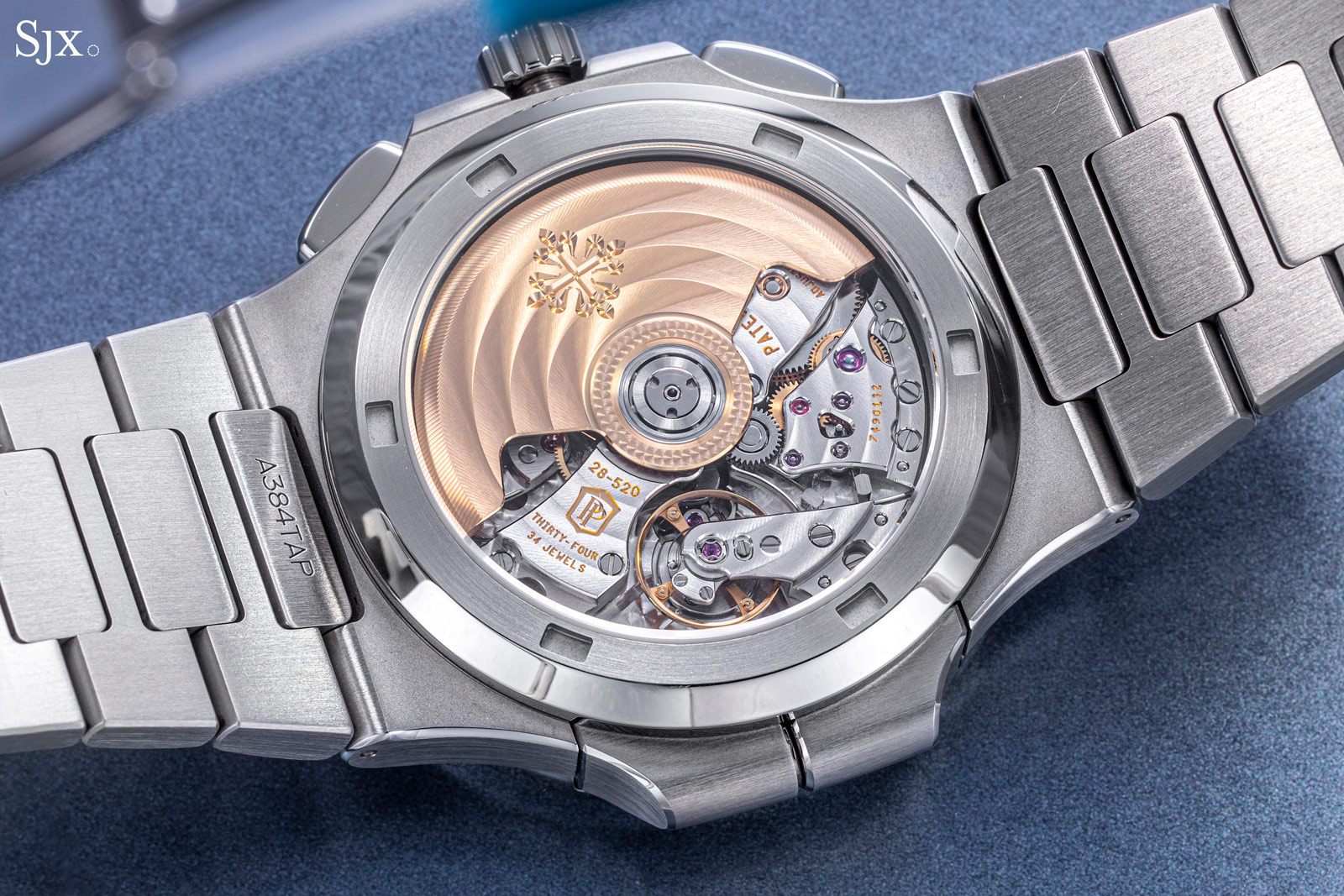
Equipped with the vertical clutch, the Patek Philippe CH 28-520 in the Nautilus Travel Time Chronograph ref. 5990/1A
Like its horizontal counterpart, the vertical clutch serves as the mechanical link between the chronograph mechanism and the going train of a movement, allowing power to flow from the going train to the chronograph, which then allows the chronograph to run. While it fulfils the same function, a vertical clutch works differently from the horizontal equivalent, a distinction that comes with its own set of advantages and disadvantages.
How it works
A chronograph vertical clutch is similar to the clutch found in the manual transmission of some automobiles. The clutch of an automobile enables the intermittent connection between the engine’s flywheel (which delivers torque and angular velocity) and gear box. This will be familiar to drivers of manual transmission cars: clutch in and the connection is broken, allowing for a gear change; clutch out after shifting gears, and the connection is resumed.
The vertical clutch of a chronograph performs the same function, providing an on-demand connection but between the going train of the movement and the chronograph mechanism.
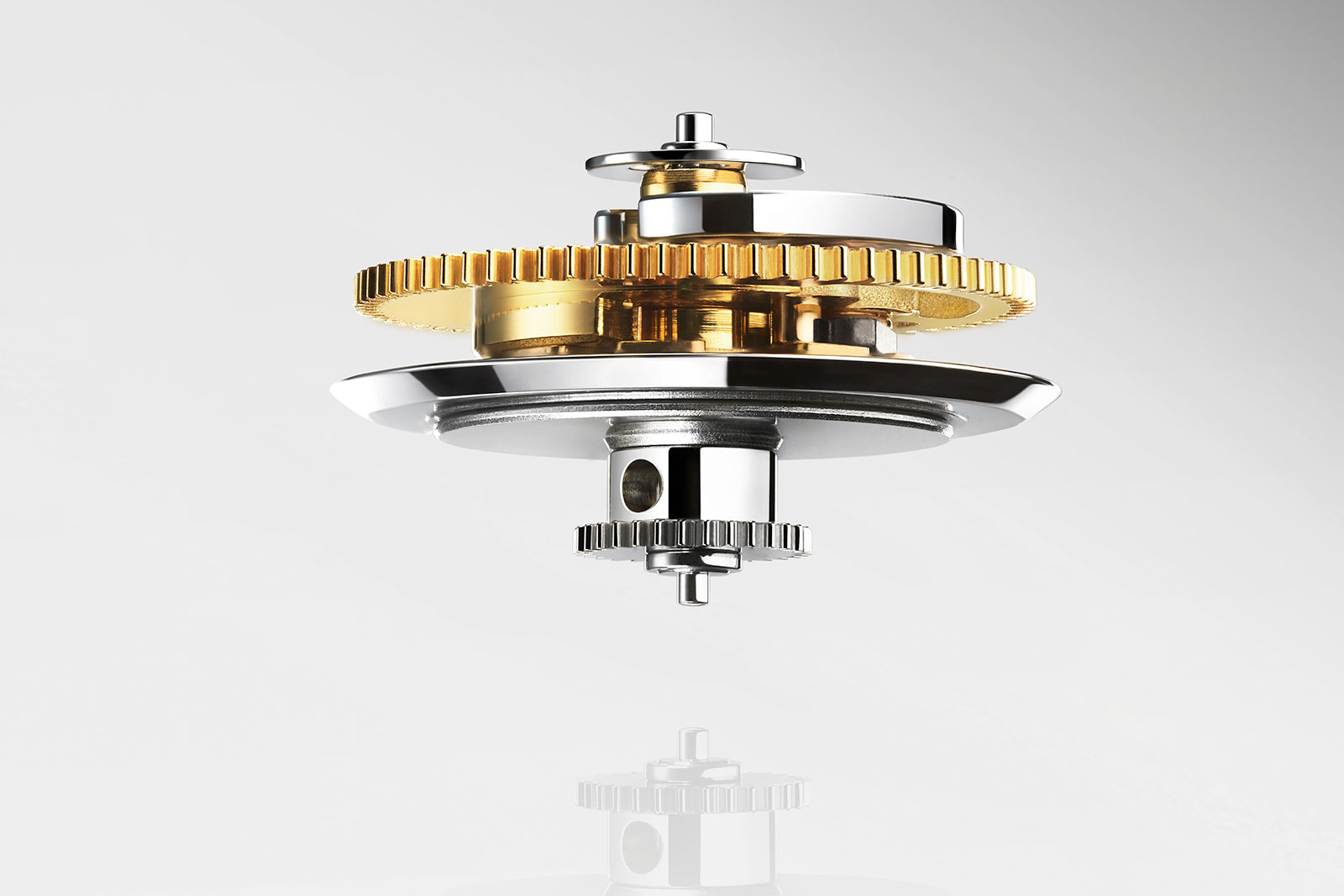
The vertical clutch assembly in the Rolex cal. 4130. Image – Rolex
Although the specifics vary across calibres, any vertical clutch is made up of the same basic components as shown in Figure 1: a flywheel (yellow) geared to (or even part of) the going train; a cone (grey) that is linked to the chronograph seconds mobile, and vertically tensioned by a spring (red); a pair of pincers (blue) that engage with the cone, lifting or lowering the cone. All these components share the same axis.
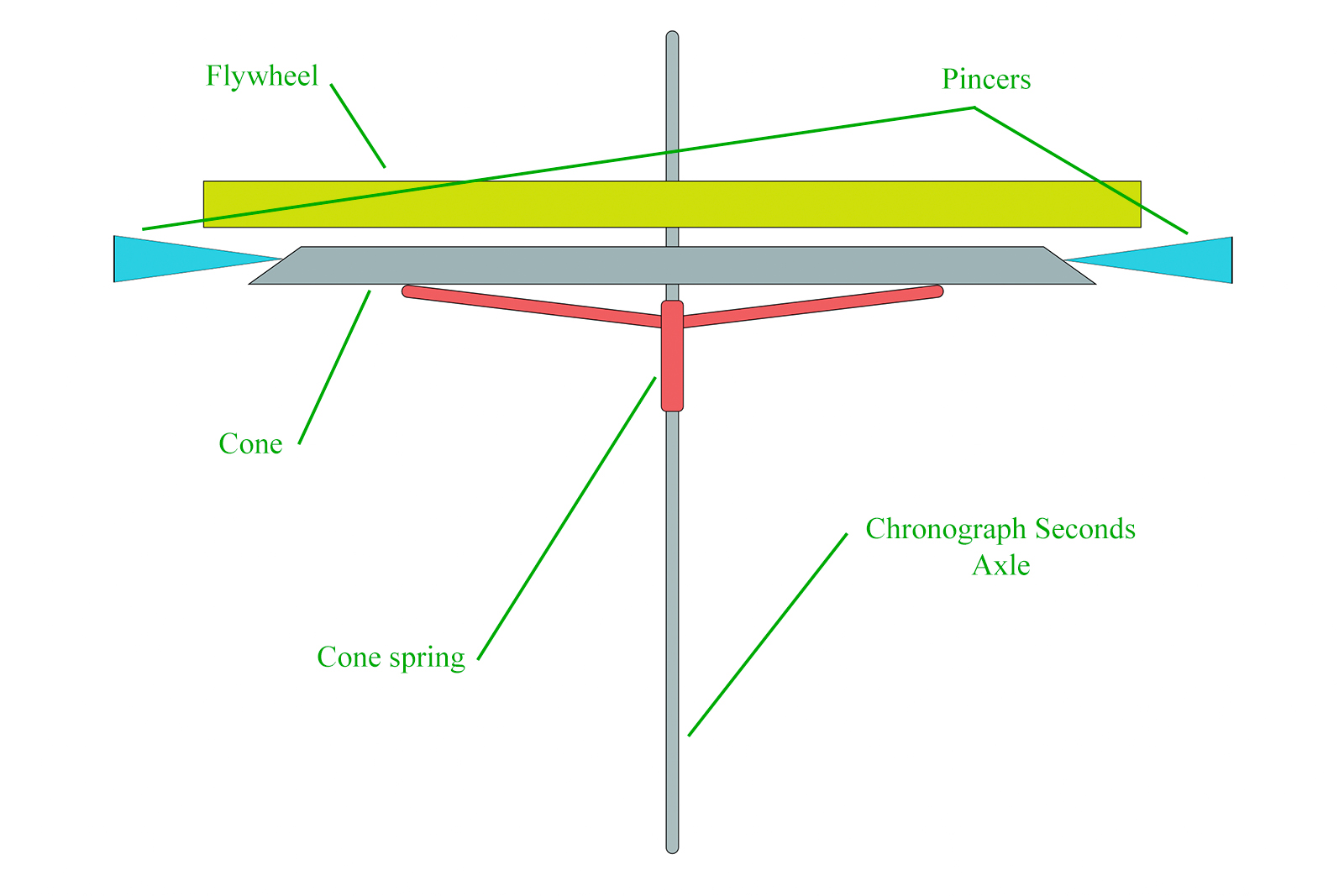
Figure 1. Simplified cross-section of a vertical clutch
The vertical clutch assembly of flywheel (yellow), tension spring (red), along with the pincers (blue), are illustrated from an overhead view in Figure 2, which is extracted from the Swiss patent associated to the Breitling B01, which also shows the broader architecture of a modern chronograph movement.
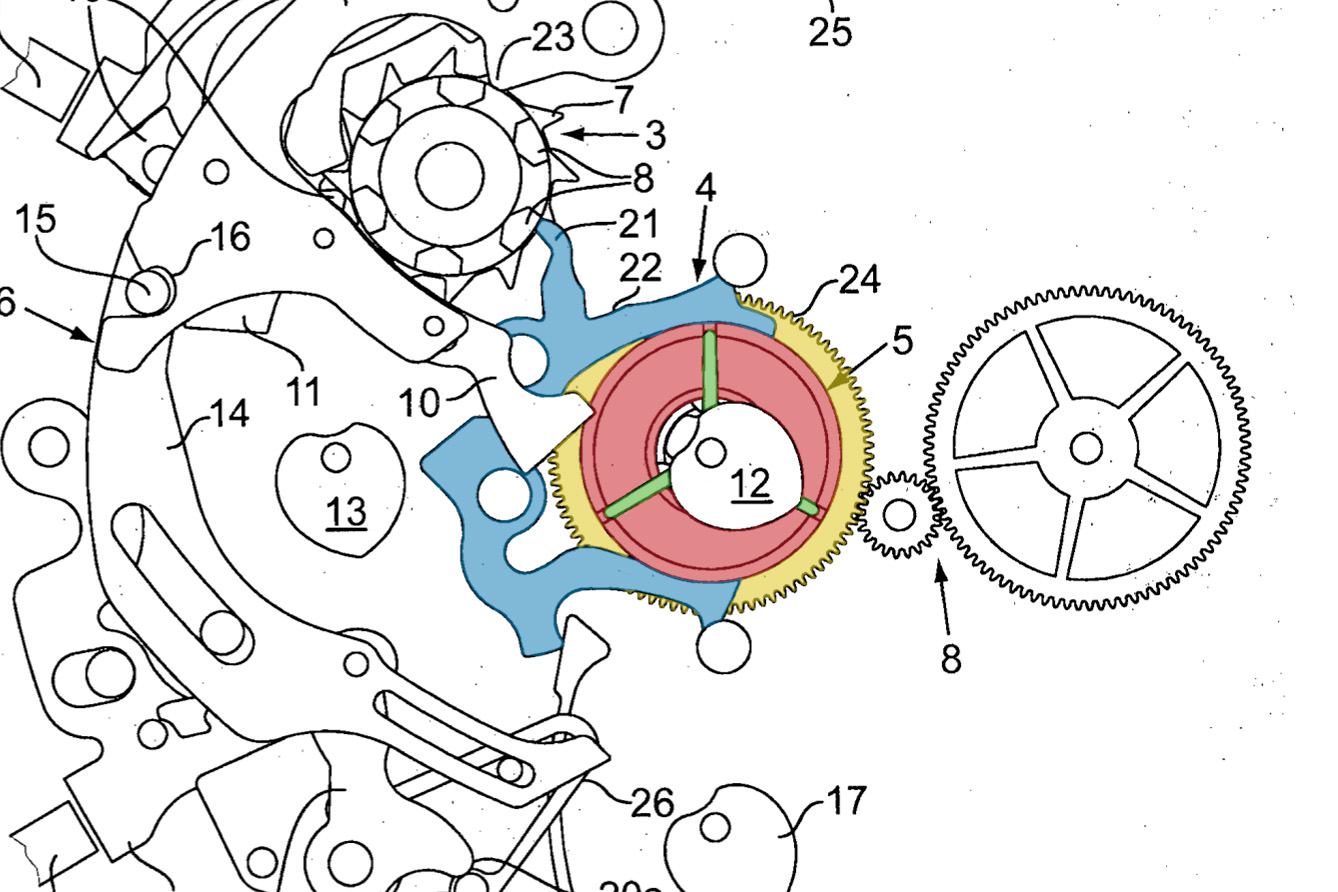
Figure 2. A section of the Breitling B01; note the structure of the pincers. Source – Swiss patent CH710205B1 filed by Breitling
Thanks to the tension spring underneath, the cone is sprung towards the flywheel, so its tendency is always to move upwards. When the chronograph is disengaged, the two pincer arms close in, lowering the cone (along with the chronograph seconds mobile and its associated hand), separating it from the flywheel. The cone then remains stationary while the flywheel rotates freely, driven by the going train.
When the chronograph is engaged (Figure 3), the chronograph control organ (typically a cam or column wheel) spreads the pincers away from the cone, allowing the cone to rise, thanks to the tension spring below, and make contact with the flywheel.
The cone is now connected to the flywheel and energy flows from the going train to the chronograph, causing the chronograph to run. The flywheel drives the cone at the rate of one revolution per minute, with the two components rotating together as one. The surfaces of the cone and flywheel can be coated in abrasive, which increases the security of the engagement and prevents slipping.
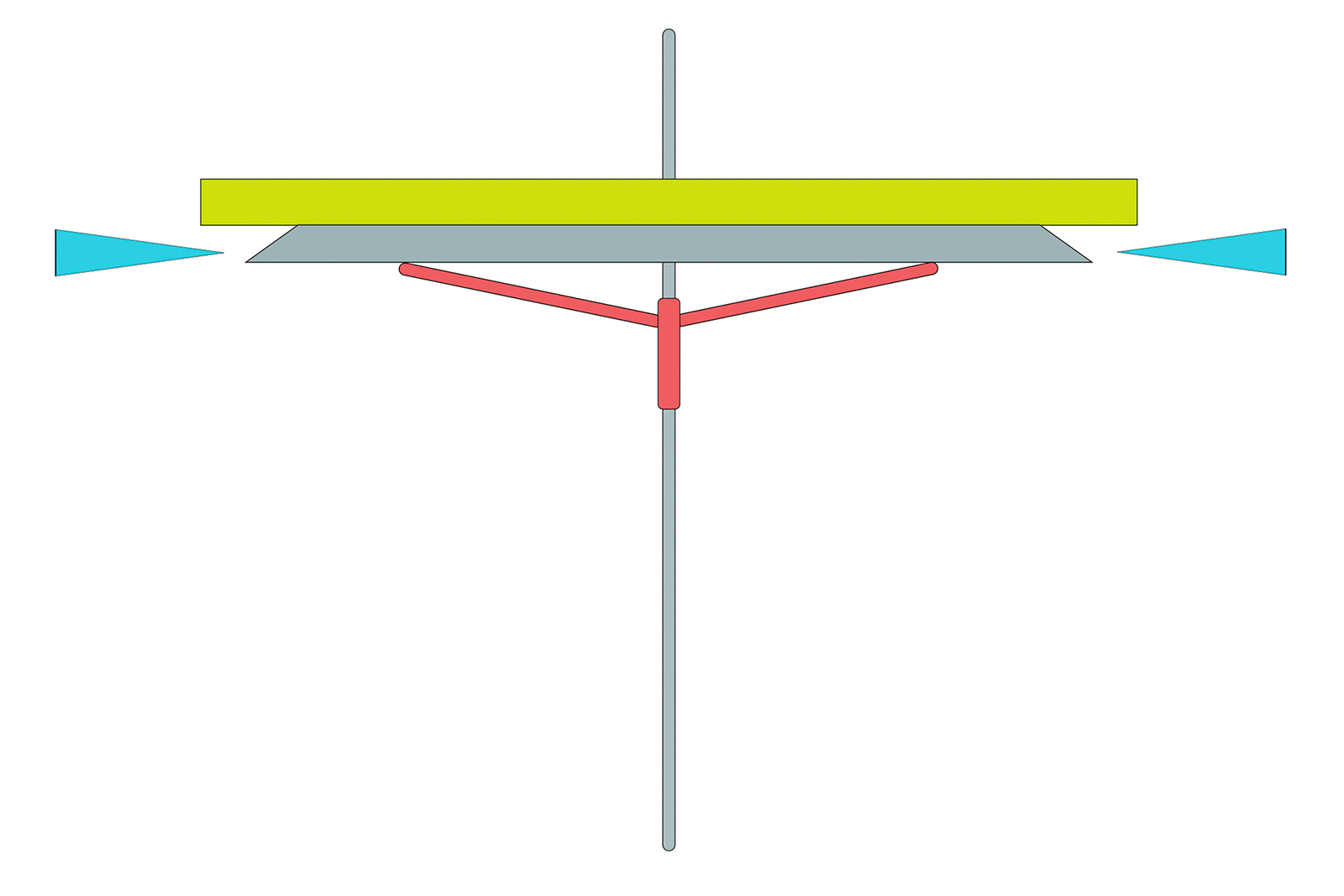
Figure 3. Vertical clutch engaged, with cone raised and engaged with flywheel
When the chronograph is stopped, the pincers close in against the cone, pushing it down and swiftly breaking its engagement with the flywheel. This disconnects the energy flow from going train to chronograph, while the mobile is kept stationary under tension by the pincers, causing the chronograph seconds hand to freeze instantaneously. For this reason, a vertical clutch chronograph doesn’t require the dedicated braking lever that is mandatory with a horizontal clutch.
The vertical clutch performs energy transmission, but also serves a role in the chronograph function. The chronograph seconds mobile (which is generally made up an axle, the clutch cone and its tension spring, a heart-shaped reset cam, and possibly an additional gear or finger) runs the elapsed minute counter as well, causing the elapsed minute hand to advance by one for every 60 seconds passed. This counting of minutes can be semi-instantaneous or jumping (with a finger), or “dragging” (if achieved with an additional gear).
Compared again the horizontal clutch
The vertical clutch is widely regarded as more efficient and a better performer than the classical horizontal clutch, explaining why majority of new chronograph calibres employ a vertical clutch. In fact, only new calibres that incorporate a horizontal clutch are either haute horlogerie constructions that do so for aesthetic and historical reasons, like the Vacheron Constantin cal. 3200, or movements that are essentially remakes of vintage calibres, like the Omega cal. 3861.
The truth of this simply reflects the fundamental physics of the vertical clutch. Because of the pincers and cone, it operates with very little friction, while also suffering little inertial loss of energy, since there are no intermediate gears that consume energy.
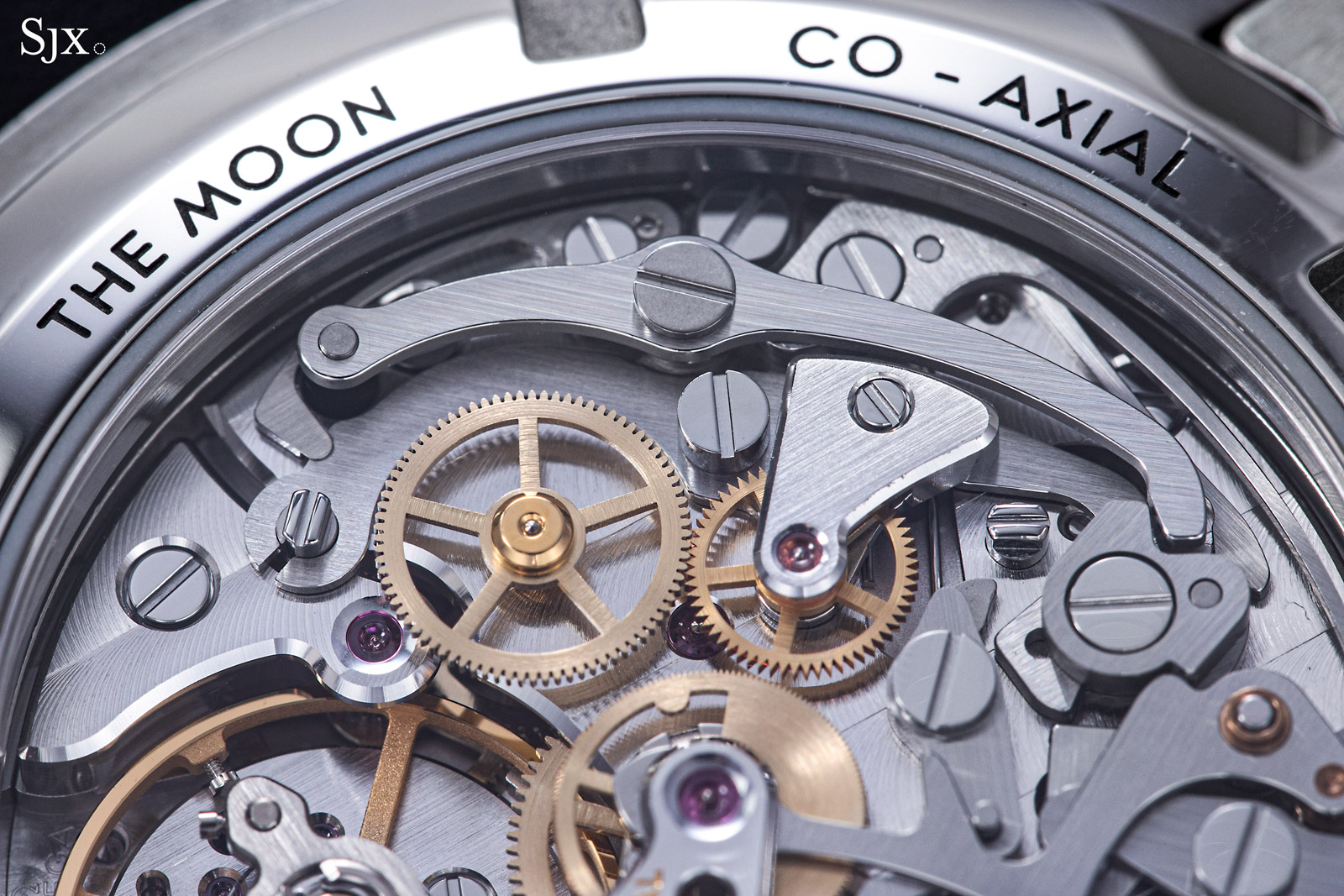
An example of a classical horizontal clutch in the Omega cal. 3861, which is descended from the Lemania cal. 1872/1873.
There is also no lateral meshing of wheels, a sometimes problematic process that can degrade the gears. A lateral clutch also usually requires manual adjustment of the depth of engagement between the meshing wheels, which is unnecessary in a vertical clutch.
With the up and down motion of the cone, all energy transfer happens seamlessly, with no imperfect engagement between the components. For the same reason, a vertical clutch engagement is more secure and reliable, because the connection can’t come undone in the case of shock.
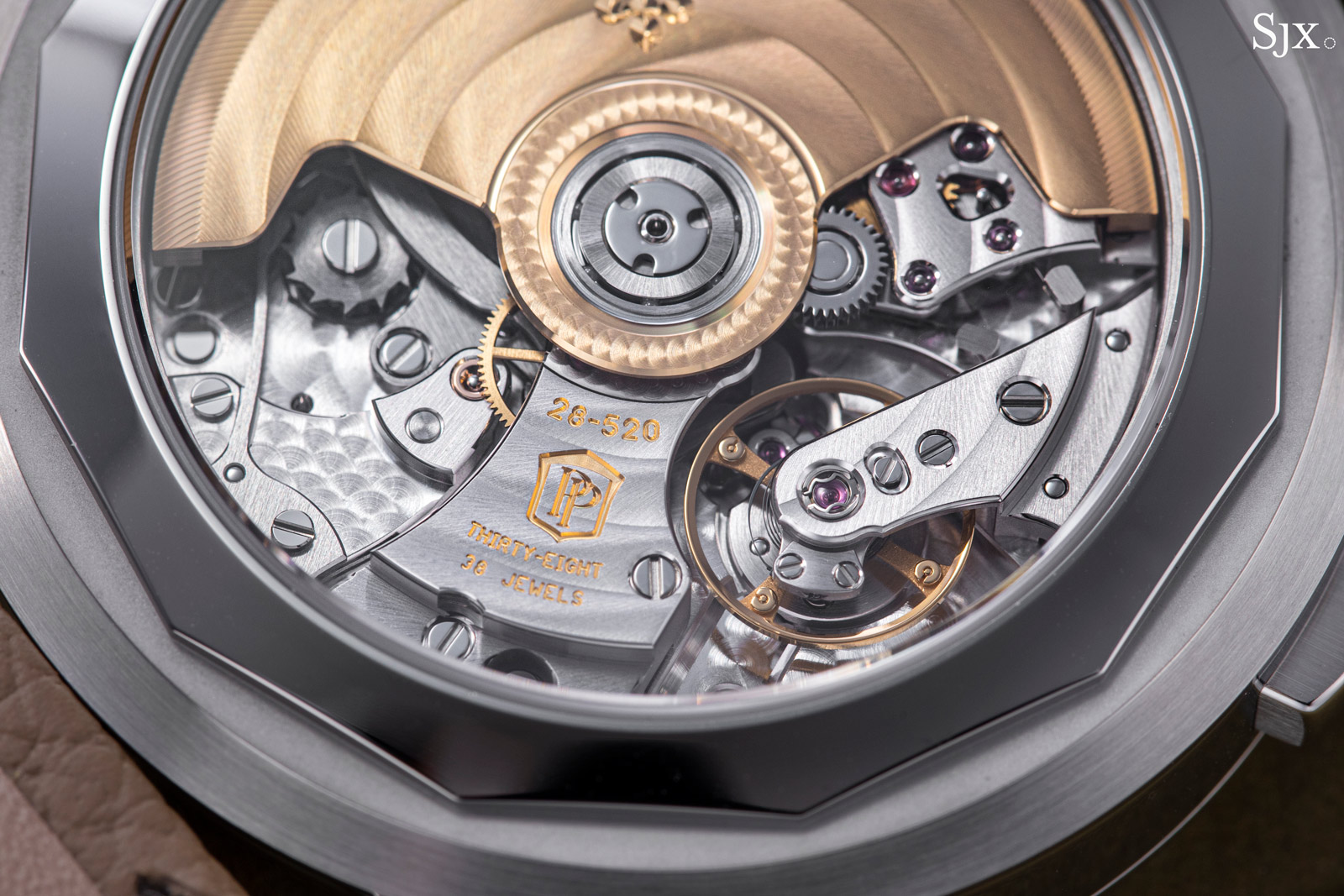
Patek Philippe introduced the CH 28-520 in 2006 inside the ref. 5960P and marketed it as one of the rare calibres that would still keep good time with the chronograph left running continuously, thanks to the vertical clutch
All of these mechanical advantages also translate into a practical upside for the wearer: a chronograph endowed with a vertical clutch can be left running indefinitely, with no undue wear on any of the components. In fact, a vertical clutch chronograph can be engaged continuously with negligible deterioration in timekeeping.
Even repeatedly starting and stopping a vertical clutch chronograph results in little amplitude loss in the balance, since the flow of torque from the gear train to the escapement is largely uninterrupted with the vertical clutch engagement.
Back to top.

